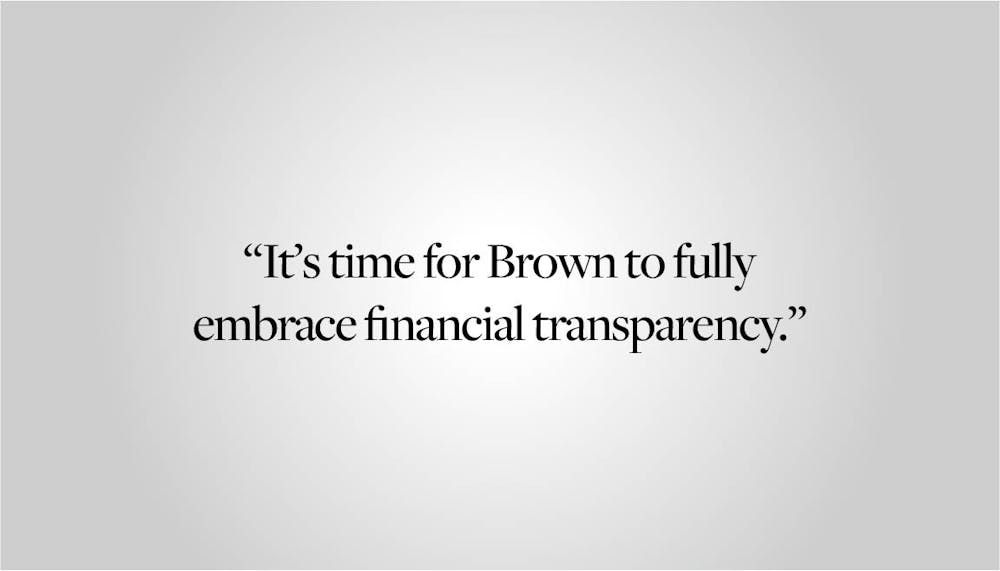Brown University is facing what could be a serious challenge to its institutional reputation: The University, along with 16 other top universities, is being sued as part of a class action suit that could apply to 200,000 students. From 1994 until the early 2010s, Brown was part of the now-defunct 568 Presidents Group, a group named after Section 568 of the Improving America’s Schools Act of 1994, which exempted universities practicing in need-blind admissions from certain antitrust laws, allowing them to use a common financial aid methodology. The original suit alleges that nine schools, a group Brown is not a part of, did not practice truly need-blind admissions. This would invalidate the whole group’s exemption and render it an illegal cartel, or a group of market participants that sets prices together to maximize profits. Plaintiffs say that the group conspired to reduce the amount of financial aid given to students, ensuring these schools did not have to compete with one another on their aid packages.
This case is far from cut and dried, and so far a judge has ruled that the case can go forward to discovery. Regardless of its merits, valid questions about transparency lie at the heart of the case. The lack of transparency around university admissions and financial processes, including how financial aid packages are calculated and the preferential treatment donor families receive, is leaving Americans increasingly frustrated. As such, this case presents an excellent opportunity for Brown to work on restoring its relationship with students, Providence and its alumni network by introducing a far greater degree of transparency in its future dealings. It’s time for Brown to fully embrace financial transparency.
The 568 case might do that some itself: A judge recently ruled that plaintiffs can access admission and development records, including details about donations, and senior university officials will be required to sit for depositions if asked. But the University can and should go further — not just by publishing financial breakdowns like in its annual financial report, legally required 990 forms or other documents, but by releasing a breakdown of the decision-making process behind the University’s budget. One can understand why Brown might withhold the information it does. It could allow the University to act more efficiently and protect the privacy of certain individuals in the decisions while also avoiding conflict. But the benefits in sharing information outweigh those concerns.
While the numbers that Brown already releases are useful, they do not offer any insight into why Brown would spend what it does on any given service, or why one area was prioritized over another. Even the cost calculators developed by Brown for applicants and students on financial aid provide only numbers, not the reasons for the results produced.
Answers to these questions would provide students with a wealth of information currently denied to them. With an understanding of how their money is actually being put to use, students would trust the University more. This could bleed into other aspects of campus life, as students might push back less on Brown’s actions if they understood how they fit into Brown’s full decision-making process. For example, for many students, financial aid decisions are the most important consideration when choosing a college. Brown offers very generous packages to admitted students, but it is critical that students have a complete understanding of how these packages are awarded so they can be confident that they can afford four years of college and plan effectively.
Financial decision-making transparency would not only improve Brown’s relationship with its student body, but its dealings with Providence as well. Brown is currently renegotiating the payments it makes to the city in lieu of property taxes, and some are already expressing distrust and anger. This issue has long troubled the city and clearly stems from a general lack of trust between Providence and the University. Even in 2012, Brown and the city were disputing basic facts regarding the payments, and there is still a lack of permanent consensus between the city and Brown. The real tragedy is there is no need for constant squabbling — Brown is dedicated to Providence, and the city values the University immensely. If Brown were willing to embrace radical transparency and show the city how it reaches the conclusions they do, it could help resolve a major source of their tension and improve a partnership that has done wonderful things for the city and will continue to.
Finally, transparency would improve relations with alums. Without clear insight into how Brown is making decisions and allocating its funds, alums may question how their donation dollars are being spent. Providing complete transparency will make alums more engaged and increase the time, energy and money they give to the University after graduation.
Brown’s annual reports are important first steps toward transparency, but it still has a lot of work to do. This should not be work that the University fears though; fully transparent operations would strengthen its key relationships. And in doing so, Brown would set a new standard as one of the first major private universities nationwide to embrace such a transparent operating procedure.
Gabe Sender ’25 can be reached at gabriel_sender@brown.edu. Please send responses to this opinion to letters@browndailyherald.com and other op-eds to opinions@browndailyherald.com.
Gabe Sender is a Staff Columnist at The Brown Daily Herald with a particular focus on campus issues and development challenges in Providence. He is currently pursuing an independent concentration in urban environmentality.





